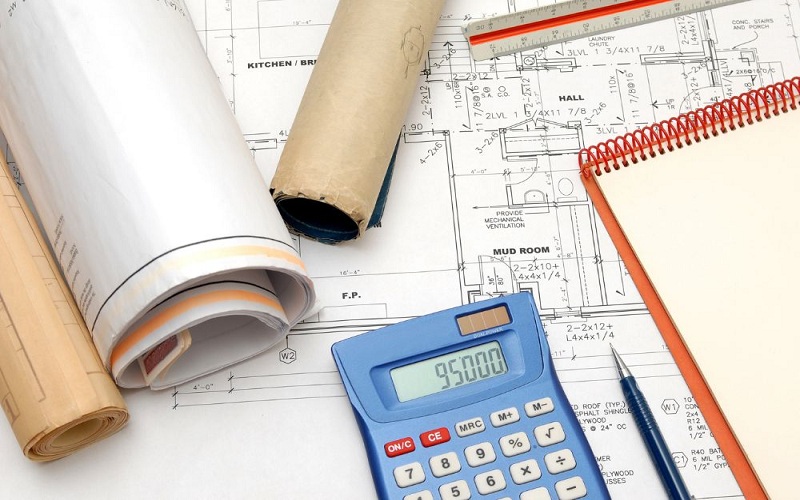In the realm of construction and project management, the terms “material takeoffs” and “estimation” are more than just jargon; they are the backbone of planning, budgeting, and executing projects with precision and care. At their core, material takeoffs and estimation processes are not merely about numbers and calculations; they embody a deep understanding of project needs, a commitment to efficiency, and a dedication to bringing visions to life. This article delves into the myriad benefits of material takeoffs and estimation, illustrating how these processes, when executed with expertise and empathy, can transform projects from mere concepts into realities that stand the test of time.
- Building the Foundation: Understanding Material Takeoffs and Estimation: Material takeoffs involve the detailed process of listing every piece of material required to complete a construction project. This includes quantities, types, and sizes of materials, from the major components like steel and concrete to the smallest details like nails and screws. Estimation, on the other hand, is about predicting the cost of these materials and the labor needed to assemble them into the final structure. It’s about foreseeing the financial and physical resources required to turn blueprints into buildings, roads, or bridges.
- Precision Planning: The Heartbeat of Successful Projects: One of the most significant benefits of material takeoffs and estimation is the precision it brings to project planning. By meticulously detailing every material requirement, project managers can avoid the pitfalls of over- or under-ordering, ensuring that projects are not delayed by shortages or burdened with excess costs. This precision planning fosters a sense of security among stakeholders, knowing that the project is built on a foundation of careful calculation and foresight.
- Cost Management: The Art of Balancing Quality and Economy: In a world where resources are precious, the ability to manage costs effectively is invaluable. Residential construction material takeoff and estimation allow project managers to paint a clear picture of the financial landscape of a project. This clarity enables the negotiation of better deals with suppliers and the identification of cost-saving opportunities without compromising on quality. Through this artful balance, projects can achieve the highest standards of construction within the confines of budgetary constraints.
- Time Efficiency: The Unsung Hero of Project Management: Time, in the construction industry, is as crucial as cost. Delays can lead to escalated costs and strained relationships with clients. The thoroughness of material takeoffs and estimation processes plays a pivotal role in preventing these delays. By ensuring that all materials are accounted for and budgeted from the outset, project timelines are more accurate, and the risk of waiting on unforeseen material needs is greatly reduced. This efficiency is the unsung hero that keeps projects on track, maintaining momentum and stakeholder confidence.
- Risk Mitigation: Navigating the Unpredictable with Confidence: The path of construction projects is often fraught with uncertainties. Market fluctuations, supply chain disruptions, and unexpected site conditions are just a few of the variables that can throw a project off course. Material takeoffs and estimation act as a navigational tool in this unpredictable journey, allowing project teams to anticipate and plan for risks. By having a detailed overview of material and cost needs, teams can create contingencies that safeguard the project against the unforeseen, turning potential obstacles into manageable bumps in the road.
- Sustainable Building: A Commitment to Future Generations: Sustainability is no longer a choice but a necessity in construction. Material takeoffs and estimation processes contribute significantly to building sustainably by enabling the precise calculation of materials, which in turn minimizes waste. This precision supports the use of resources in a way that meets today’s needs without compromising the ability of future generations to meet theirs. Furthermore, by accurately estimating materials and costs, projects can incorporate eco-friendly options that might have been overlooked due to perceived expense, thereby contributing to a healthier planet.
- Strengthening Client Relationships: The Power of Transparency: Transparency is the cornerstone of trust in any relationship, including those in the construction industry. Material takeoffs and estimation provide a transparent foundation for client interactions, showcasing the thoroughness and integrity of the project team. By presenting detailed material and cost breakdowns, clients are not left in the dark but are partners in the construction process. This transparency fosters trust, strengthens relationships, and often leads to repeat business and referrals.
- Enhancing Collaboration: Bridging the Gap Between Teams: Material takeoffs and estimation foster an environment of collaboration and communication among various teams involved in a project. By providing a detailed and common understanding of material and cost requirements, these processes ensure that architects, engineers, project managers, and contractors are on the same page. This collaborative atmosphere not only streamlines the workflow but also encourages the sharing of ideas and solutions, leading to innovative approaches and improved project outcomes. Enhanced collaboration results in a cohesive team effort, where challenges are addressed collectively, and successes are shared by all.
- Facilitating Project Financing: Securing the Future: The detailed financial insights provided by material takeoffs and estimation are instrumental in securing project financing. Lenders and investors require a clear understanding of a project’s scope, costs, and potential return on investment. The precision and reliability of these processes make it possible to present compelling cases for financing, demonstrating the project’s viability and reducing perceived risks for financial backers.
- Maximizing Resource Efficiency: Doing More with Less: In an era where efficiency is paramount, material takeoffs and estimation play a critical role in maximizing the use of resources. By accurately determining the quantity of materials needed, these processes minimize waste and promote the efficient allocation of labor. Projects can thus achieve more with less, ensuring that resources are utilized to their fullest potential.
While material takeoffs and estimation by Remote Estimation might seem steeped in technicality, their true essence lies in the human touch they bring to construction projects. They are not just about building structures but about building dreams, managing resources wisely, and safeguarding the interests of all stakeholders involved. By embracing the benefits of material takeoffs and estimation, the construction industry can continue to rise to the challenges of the modern world, delivering projects that are not only structurally sound but also economically viable, time-efficient, and sustainable. In this light, material takeoffs and estimation are not just beneficial but essential, embodying the care, precision, and foresight that turn the wheels of progress in construction.

